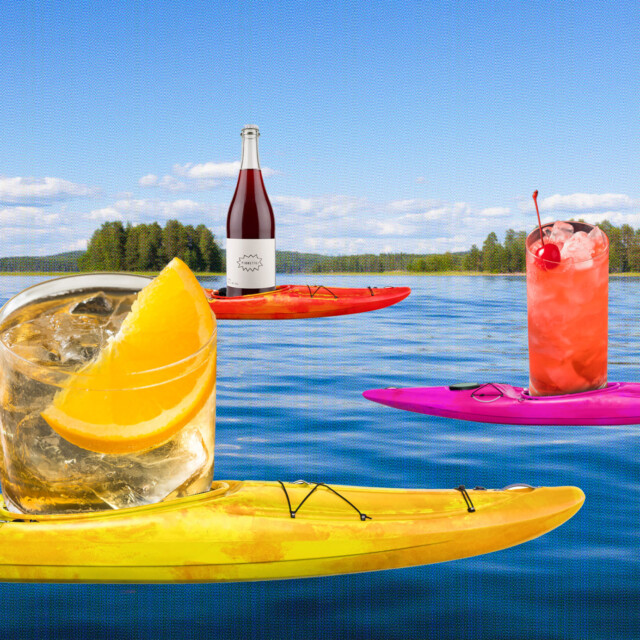The hottest days of the year usually bring a flurry of excitement with them, with longer days prompting trips to the beach, leisurely afternoons in the park, and al fresco dining. The season also tends to shift the public’s drinking habits, as menus adopt cocktails containing bubbles, botanicals, and fruit. In some cases, these builds have all three, like the unstoppable Aperol Spritz. Enter: the drinks trade, which stands ever-ready to predict the next big summer drink each year — no matter how early in the season, and no matter how little evidence there might be to back it up.
While some cooling cocktails have managed to win over the general public in a monumental way and continue to do so, others (see: piquette) are not quite as lucky. So, we took a look at the libations that have been declared the “drink of the summer” over the years that, quite frankly… weren’t.
Without further ado, here are five “drinks of the summer” that never reached star status.
Lambrusco (Summer 2017)
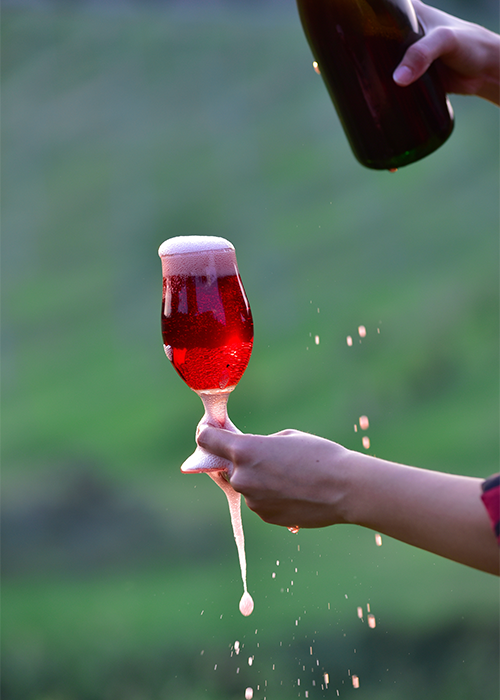
Ah, 2017. Justin Bieber’s “Despacito” remix dominated the charts, the last half-decent season of “Game of Thrones” drew millions to HBO (no, not Max), and crisp pours of Provence-style rosé swirled in everyone’s glass. But despite the pink drink’s ubiquity, a vastly different style of wine was rumored to be on the rise and ready to challenge rosé’s claim to the summertime throne: Lambrusco.
Was it really poised for a takeover, though? Google search trends from 2017 demonstrate that consumer interest in the Italian sparkler actually remained relatively low for the vast majority of the year, with searches instead spiking in November and December. And compared to 2016, interest in the sparkling red wine remained flat year-over-year. The situation was similar in 2018, too, with low search volume from January to October and a brief spike around the holiday season.
Lambrusco does check off several criteria that make it ideal for warm-weather drinking: It’s bubbly, it’s fruity, and best served chilled. But those proclaiming that Lambrusco would be the drink of the summer may have forgotten two important details: the Italian red’s heaviness and its availability stateside.
“The amount of light- to medium-bodied Lambruscos that are imported into the U.S. is not very plentiful,” says Kilolo Strobert, owner of Brooklyn wine shop Fermented Grapes. “We can’t expect it to be a category that takes off as a summer drink when it doesn’t have the lightness in terms of its weight. We need more Sorbara and rosé and white Lambrusco to hit the market in order for that to happen, and it hasn’t happened.”
Port & Tonic (Summer 2018)
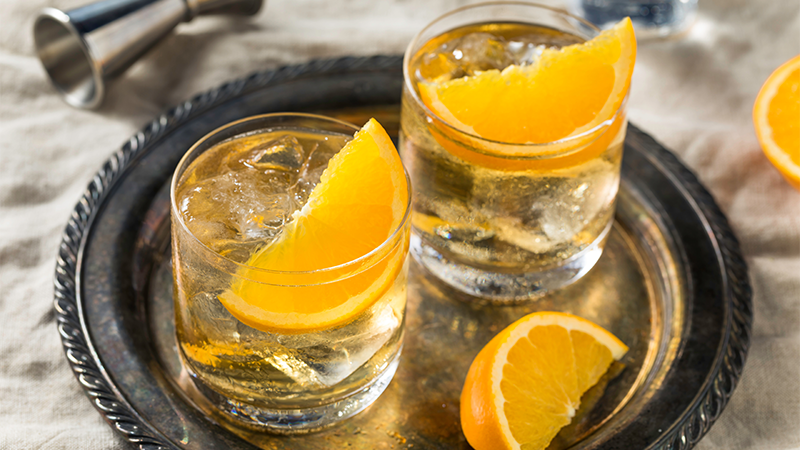
In May 2018, media predicted the Port & Tonic would “sweep the nation,” with some even declaring it to be the new Gin & Tonic. A simple mixture of white Port and tonic water, the Porto Tónico (as it’s called in its native Portugal) is a staple in the nation’s fine-dining restaurants and beach-side bars alike. It does make sense that the P&T got some stateside attention that year: Travel to Portugal by U.S. citizens increased by 20 percent, and as those Americans returned to the States, they brought memories of the beloved cocktail back with them.
“It’s easy, it’s delicious, it’s refreshing, and its low-ABV,” says Andy Seymour, founder of beverage agency Liquid Productions. “It hits a lot of the things that made it probable to be the drink of the summer, but unfortunately, it never took off, and I think that’s because of a few reasons.”
For one, Seymour suggests that American consumers simply don’t understand Port the way they understand other alcoholic beverages. While some know that it’s a fortified wine, others perceive Port as an unfamiliar liqueur or mixer they don’t know how to enjoy. Because of this restricted knowledge, there’s simply not enough white Port being sent to the U.S. to actually allow the Port & Tonic to take off.
“Port companies themselves aren’t all aligned on making [the Port & Tonic] a priority in the U.S.,” Seymour explains. “If there was one huge player on the block that had the ability to really make an impact like they can in Portugal or Spain and the remainder of Europe where there are more resources, you [would] see a more dedicated audience. But that’s unfortunately an uphill battle in the U.S..”
While Google searches for terms like “Port and tonic” and “white Port and tonic” remained nearly non-existent in 2018, consumers appeared much more ready to embrace another European aperitivo: the Aperol Spritz. And this cocktail did have the huge player Seymour speaks of backing it: the Campari Group, which has since invested millions of dollars into Aperol’s success on the American market.
Piquette (Summer 2021)
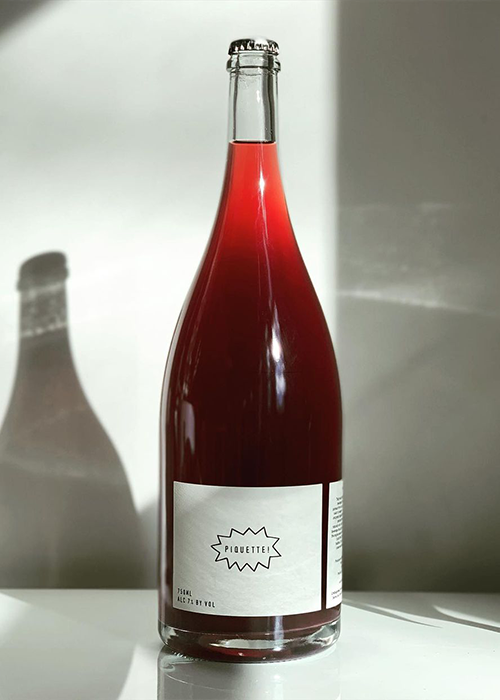
Cropping up at the peak of the U.S.’s natural wine movement, piquette was predicted to glom onto that success and flourish enough to become 2021’s drink of the season. Produced from the leftover stems, skins, and seeds of grapes used to produce actual vino, the wine product was celebrated by natural or natural-adjacent wine producers for its low alcohol content and supposedly sustainable production.
In theory, piquette makes for a great summertime drink. Its 4 to 9 percent ABV makes for easy imbibing, and its slight carbonation wouldn’t be unfamiliar to the hard seltzer crowd. There was only one problem: Piquette just isn’t White Claw, and sales of the stuff proved as much. That summer, there were no more than 20 SKUs of piquette in all of New York City. (By comparison, White Claw sold a whopping 94.5 million cases that year.) And while some of the drinks industry still insisted that piquette was on everyone’s mind, the conversation was largely silent, with the frequency of Google searches for the stuff as low as they were in 2019.
The Dirty Shirley (Summer 2022)
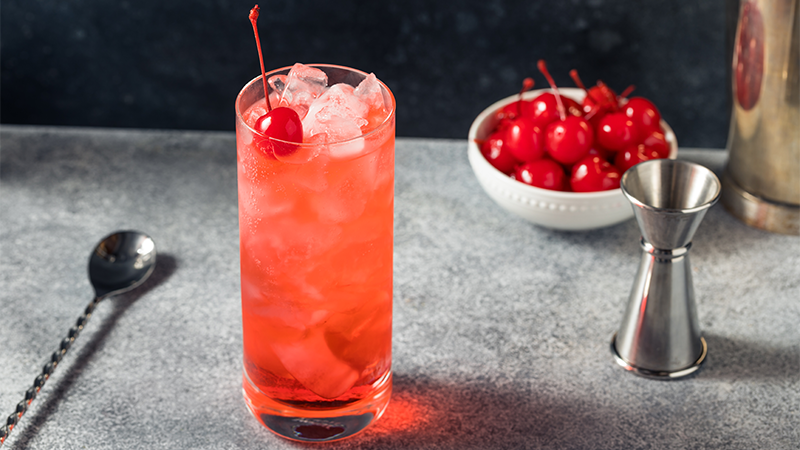
Hot pink, nostalgic, and sugared all the way up, the Dirty Shirley was pretty hot for a minute. The vodka-spiked version of the beloved Shirley Temple set social media ablaze with praise and predictions of its pending seasonal success, and media followed suit. (We argued otherwise.) But no matter which side of the aisle one found themselves on during that scorching summer, there was no denying the grenadine-soaked sipper’s presence.
Some bar programs, like those at Lupo Pizzeria in Washington, D.C., and NYC institution Fanelli Cafe, decided to stay true to the original build of vodka, sprite, grenadine, and a maraschino cherry on top. Others upped the ante with elevated ingredients for a more balanced, less saccharine build: Take Washington, D.C., cocktail bar 12 Stories, which swapped out grenadine for muddled raspberries and spiked the concoction with vodka and Cointreau.
Riffs were popping up everywhere, but once the fad started fading — and fade it did — the Dirty Shirley disappeared faster than you could say grenadine. Searches for the cocktail skyrocketed in May of that year and remained relatively high through mid-June before immediately declining come the start of July. By mid-August, searches had leveled out almost entirely, and the Dirty Shirley disappeared from bar menus as the trend was put out to pasture.
The Hugo Spritz (Summer 2023)
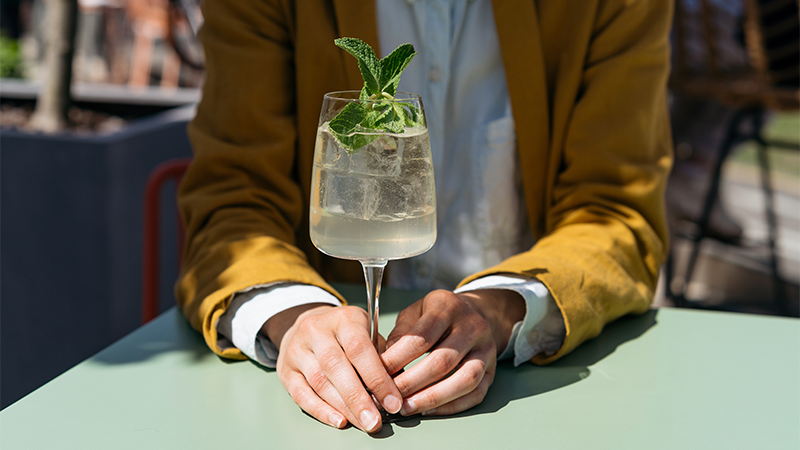
Declared the cocktail of the summer by TikTokkers galore, the Hugo Spritz is perhaps the result of Aperol Spritz fatigue. A simple combination of St-Germain elderflower liqueur, Prosecco, soda water, and mint, it’s been celebrated for its easy build and light-bodied quaffability. But despite its swift rise — Hugo Spritz videos have garnered millions of views and likes on social apps — its star-power didn’t quite translate into real-world consumption.
In the U.S., searches for the Hugo Spritz started creeping up in May and spiked dramatically in July, but almost immediately settled by the end of the month. While it never approached Aperol Spritz-levels of fame, the Hugo Spritz remains on bar menus to this day. NYC hotspots like Rezdôra and La Pecora Bianca both serve up the sparkler, and searches for the Hugo are once again on the rise. Whether that is due to an interest in low-ABV summer drinks or the seasonal power of the Spritz remains to be seen.
